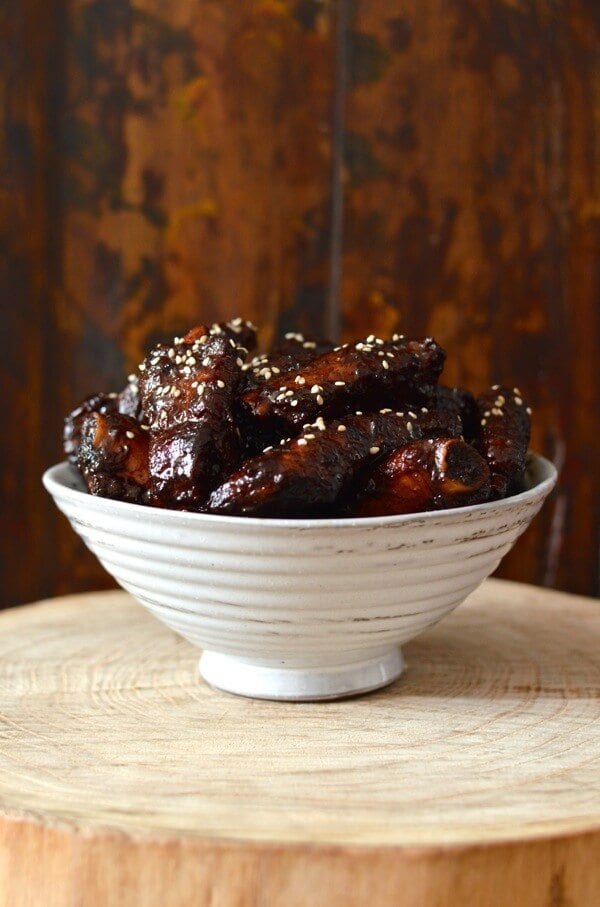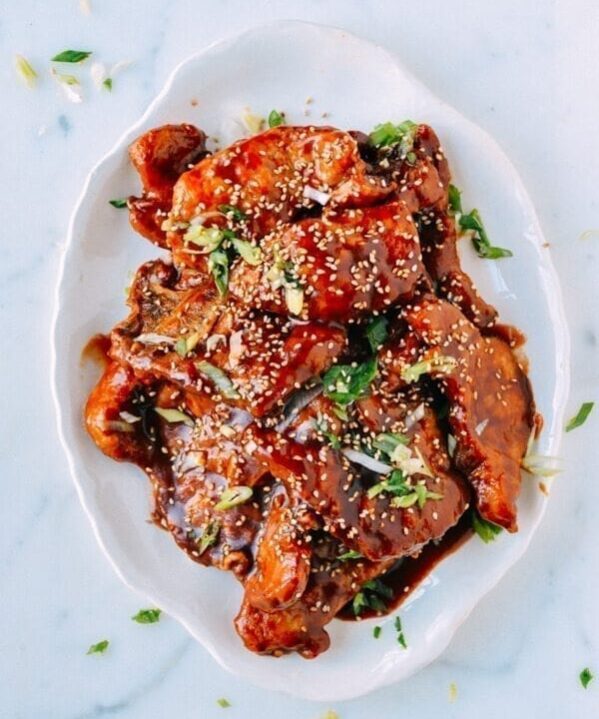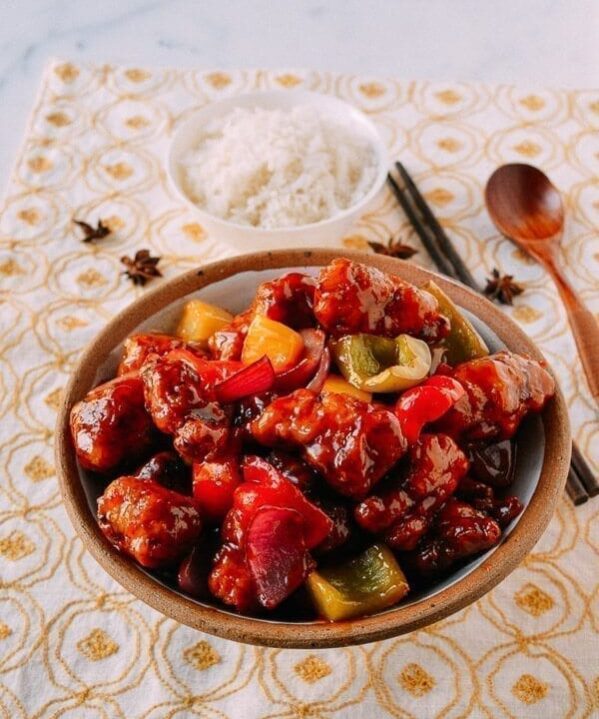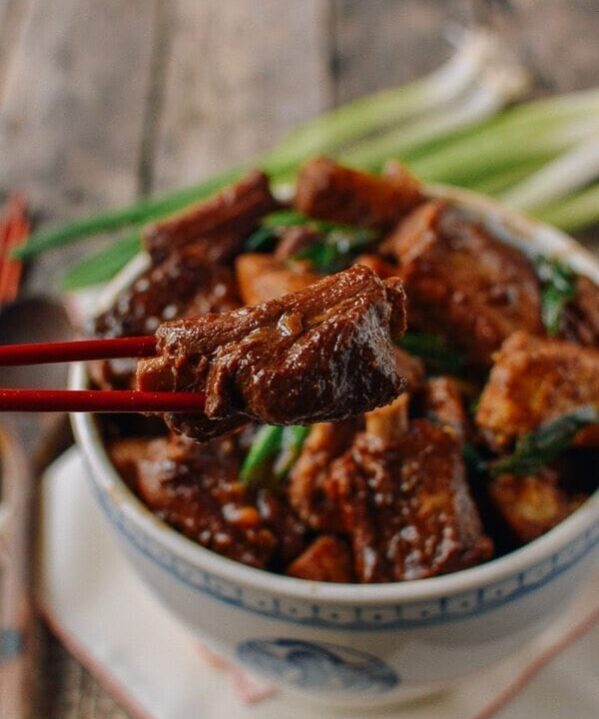In China, people often distinguish themselves as Southerners (南方人) or Northerners (北方人). It’s a question you’ll get often in taxis or first meetings.
The biggest distinguishing features for us, anyway, are the regional cuisines. Southern cuisine is roughly more delicate, refined and sometimes sweeter in taste, while northern cuisine is a bit heavier and stronger in flavor. In the south, rice is the staple, while in the north, it’s all about the bread (mantou, pancakes, etc.) and noodles.
Shanghai Sweet and Sour Ribs (tang cu pai gu, 糖醋排骨) is a signature southern dish. The delicate balance of the soy sauce, sugar and vinegar makes this dish a very popular appetizer, which is often served cold.
Appetizers in China are usually called “冷菜,” which translates to “cold dishes.” They’re all served cold or at room temperature, and there’s a vast variety of different kinds.
While I was making this dish today, I tasted it when it was hot, and it was GOOD. But we had it for dinner at room temperature, and it was astonishing how the temperature changes and intensifies the flavor.
I don’t mean to pat myself on the back, but this tang cu pai gu recipe exceeded my own expectations by a mile.
Usually, this Shanghai Sweet and Sour Ribs (tang cu pai gu) dish is made with rib pieces about 1-inch to 2-inches long. You can definitely ask your butcher to help with this, or you could even use baby back ribs. There are really no rules.
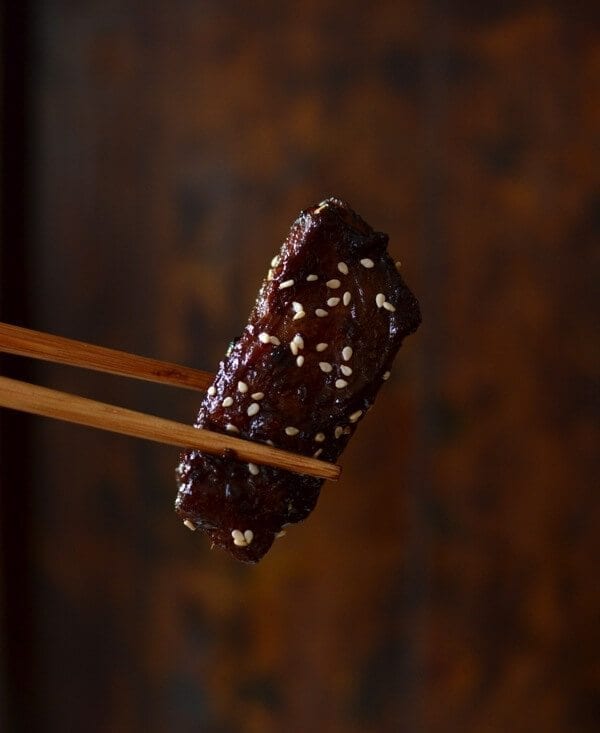
Shanghai Sweet and Sour Ribs: Recipe Instructions
Rinse the ribs and pat them dry with a paper towel. Marinate the ribs with 1 tablespoon light soy sauce and 1 tablespoon Shaoxing wine for 15 minutes.
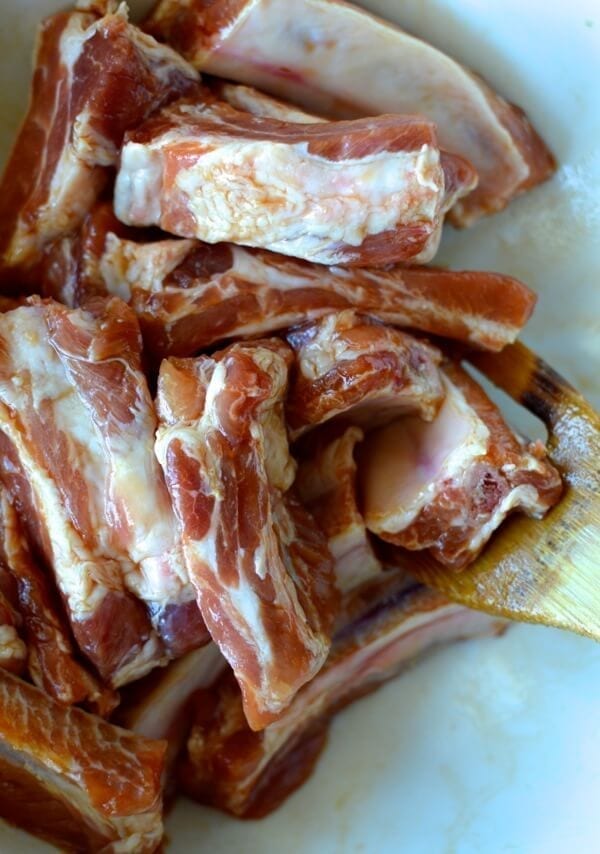
Heat 1 tablespoon oil in a flat bottomed pan over medium heat and brown the ribs on all sides. Set aside.
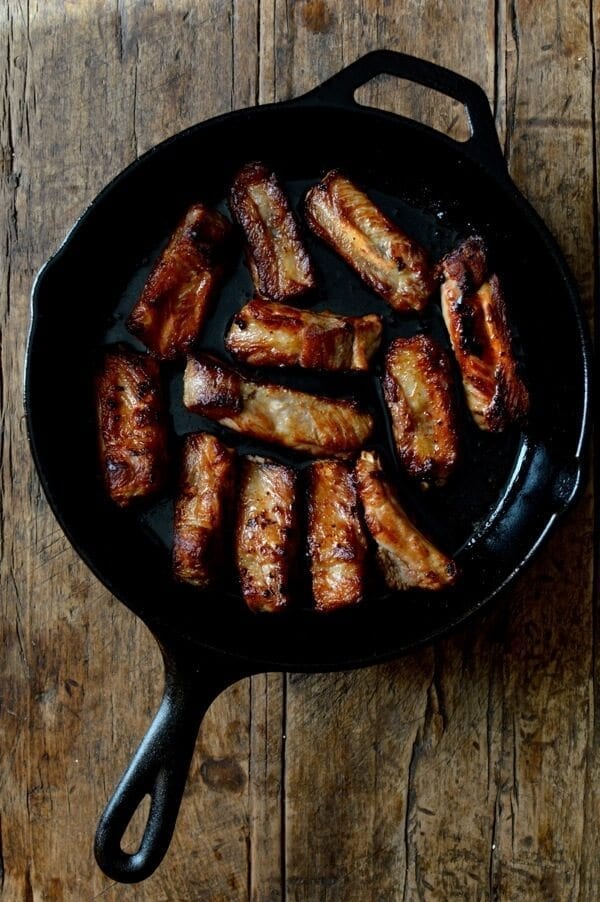
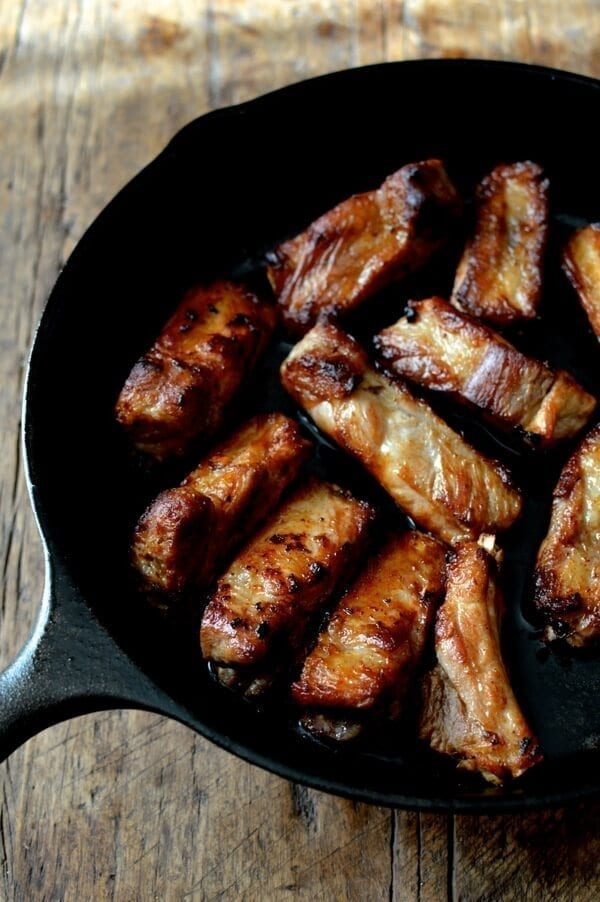
Heat another tablespoon of oil in a clean wok over medium heat, and cook the ginger and scallions until fragrant, about 3 minutes.
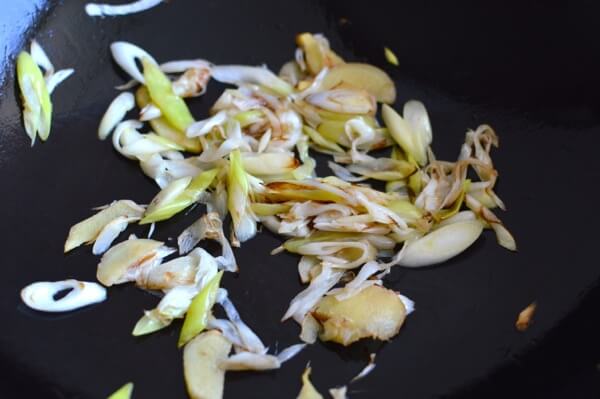
Take them out of the wok and set aside. Add another tablespoon of oil, and with the wok on low heat, add the rock sugar. Stir and let it melt.
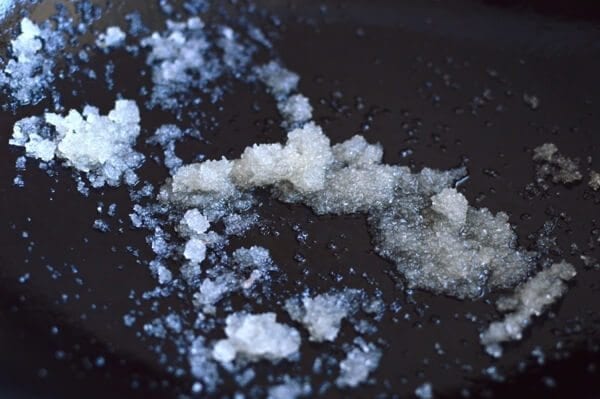
Add the ribs and coat them with the melted sugar. Turn off the heat.
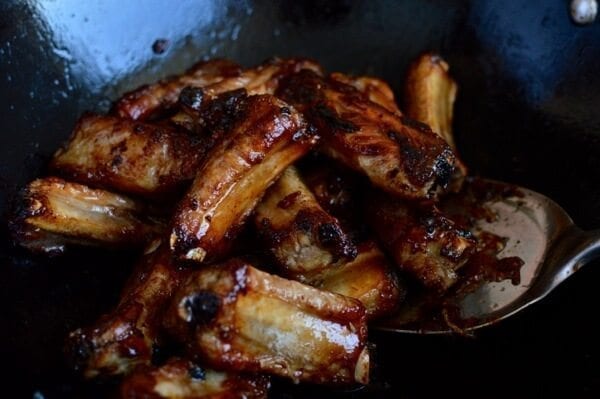
Add the second tablespoon of Shaoxing wine, dark soy sauce, Chinese black vinegar, water, and the cooked ginger and scallion.
Turn up the heat and bring everything to a boil. Then cover and simmer on low heat for 30 minutes, stirring occasionally to prevent sticking.
After 30 minutes, if there’s still too much liquid in the pot, take off the lid and turn up the heat, stirring continuously until the sauce has thickened and the ribs are coated and sticky.
It’s best to serve these ribs at room temperature. Garnish with sesame seeds if desired.
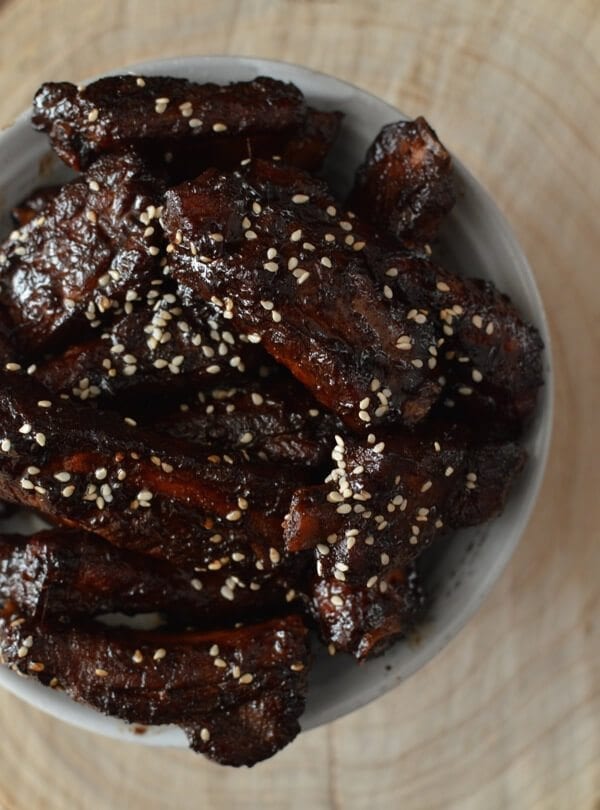
Mix the sauce with some rice, top with a couple ribs, and you’ll have heaven in a bowl. Enjoy, and remember to share!
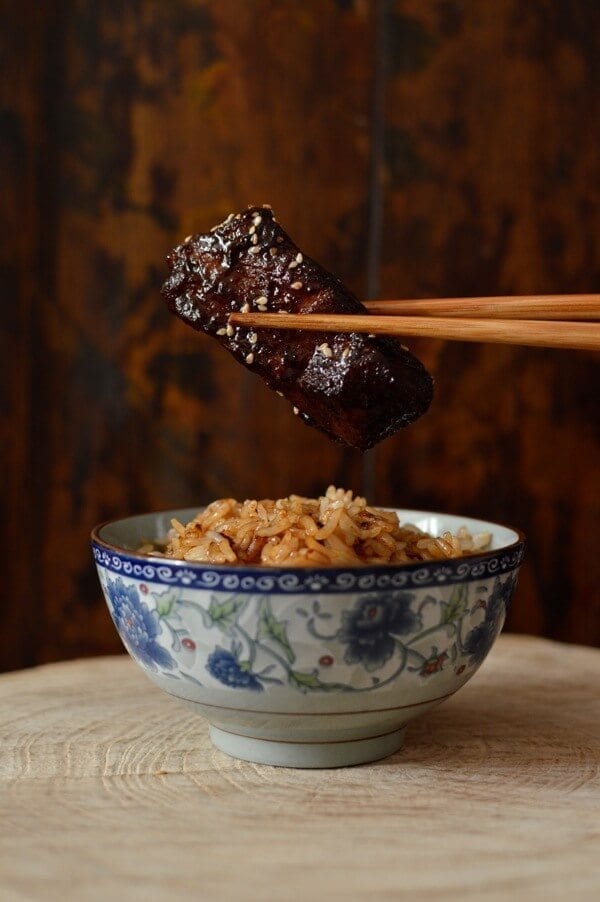
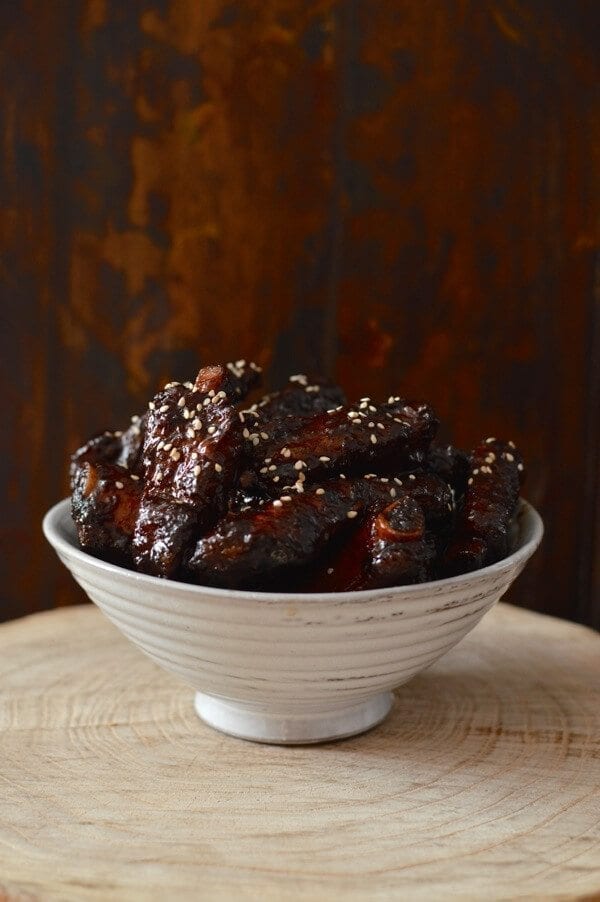
Shanghai Sweet and Sour Ribs
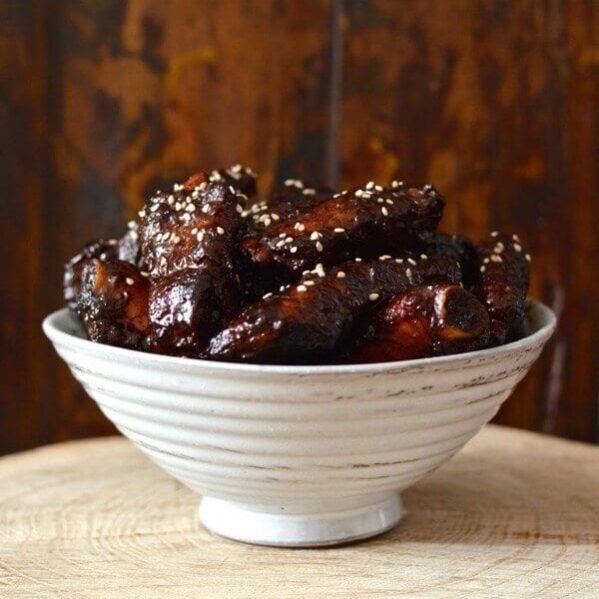
Ingredients
- 2 pounds pork ribs (900g)
- 1 tablespoon light soy sauce
- 2 tablespoons shaoxing wine (divided)
- 3 tablespoons oil (divided)
- 8 thin slices ginger
- 4 scallions (white parts only, chopped)
- 2 tablespoons sugar (rock sugar is preferred if you have it)
- 2 teaspoons dark soy sauce
- 1 tablespoon Chinese black vinegar
- 2 cups water
- toasted sesame seeds (optional)
Instructions
- Clean the ribs and pat them dry with a paper towel. Marinate the ribs with 1 tablespoon light soy sauce and 1 tablespoon shaoxing wine for 15 minutes.
- Heat 1 tablespoon oil in a flat bottomed pan over medium heat and brown the ribs on all sides. Set aside on a plate.
- Heat another tablespoon of oil in a clean wok over medium heat, and cook the ginger and scallions until fragrant, about 3 minutes. Take them out of the wok and set aside. Add another tablespoon of oil, and with the wok on low heat, add the sugar. Stir and let it melt. Add the ribs and coat them with the melted sugar. Turn off the heat.
- Add the second tablespoon of shaoxing wine, dark soy sauce, vinegar, water, and the cooked ginger and scallion. Turn up the heat and bring everything to a boil. Then cover and simmer on low heat for 30 minutes, stirring occasionally to prevent sticking. After 30 minutes, if there’s still too much liquid in the pot, take off the lid and turn up the heat, stirring continuously until the sauce has thickened and the ribs are coated and sticky.
- It’s best to serve these ribs at room temperature. Garnish with toasted sesame seeds if desired.
